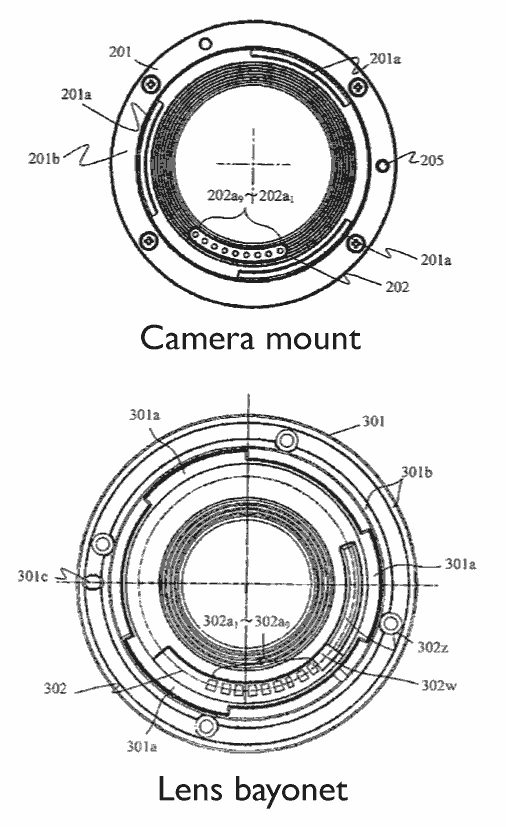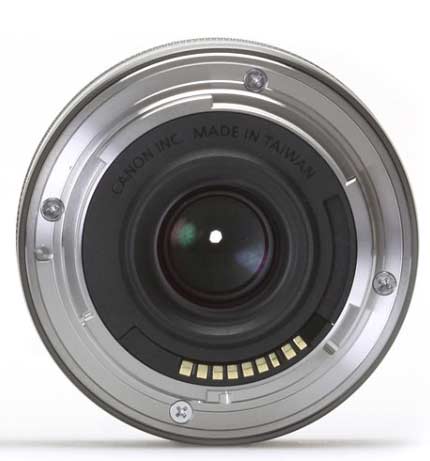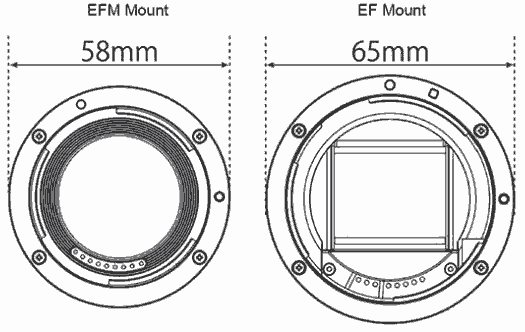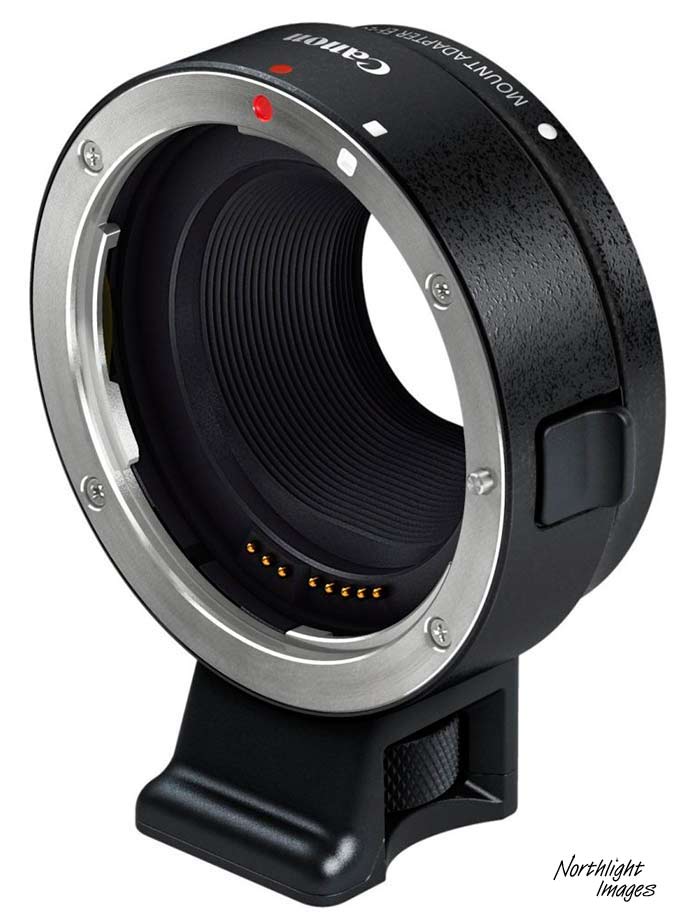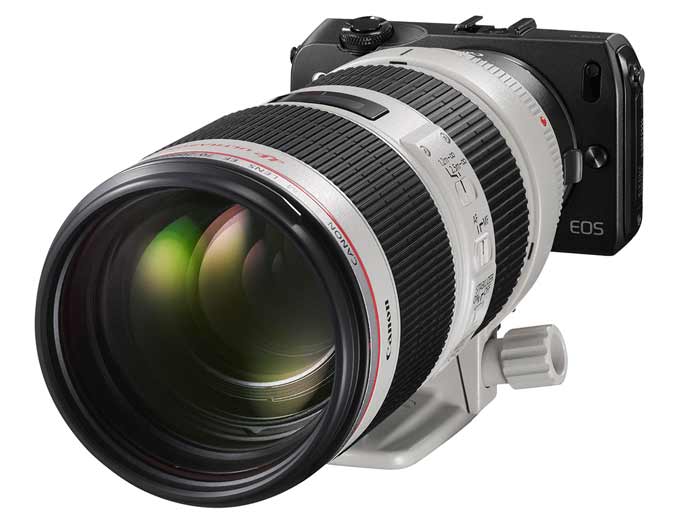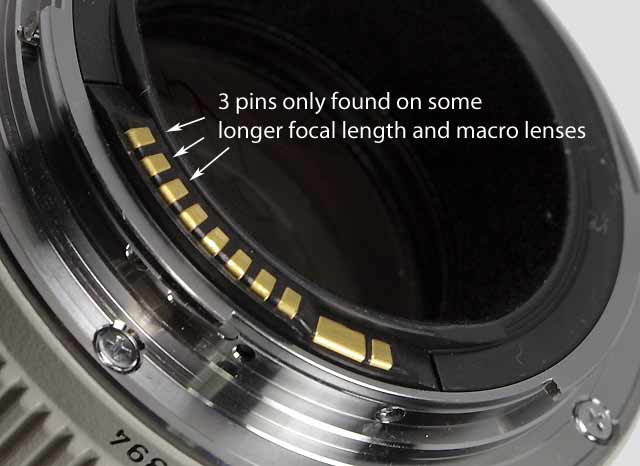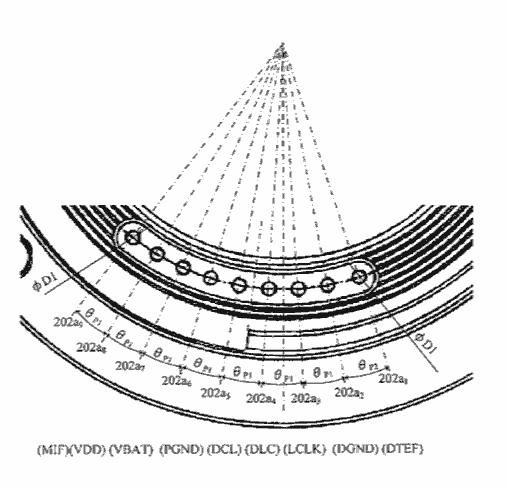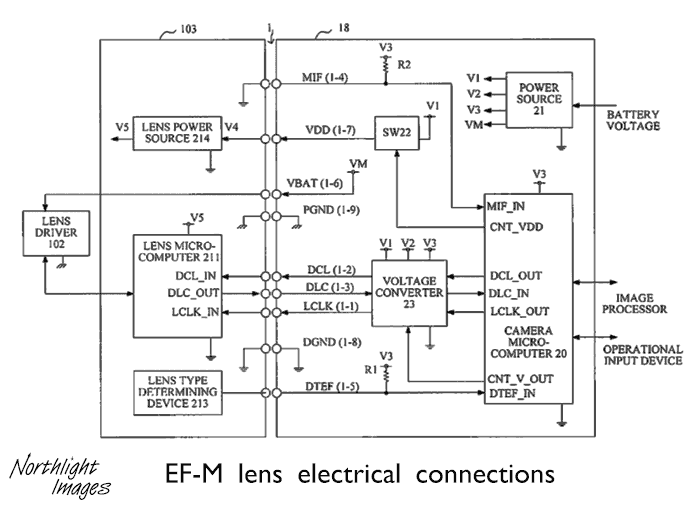
The EF lens mountTechnical aspects of the Canon EF lens mountHistoryThe EOS system was first developed in 1987, and one of its key features in the electronically connectected lens mount system. This dispensed with mechanical drives, cams and pins found in other lens mounts. The connection between lens and camera is required for the camera to control lens functions (autofocus, aperture) and for the lens to report back information to the camera body, such as focus settings and status (zoom setting for example). The EF-S mount was introduced in 2003 for EOS cameras with small sensors, along with a range of (generally cheaper) EF-S lenses. In 2012 Canon introduced the EF-M mount for their mirrorless camera system. EF and EF-S lenses can be used with Canon 'M' cameras with an adapter. EFlens.com has links to all Canon EF, EF-S and EF-M mount lenses and continues to build up our collection of reviews and other lens related information. Mechanical aspectsThe EF mount incorporates a number of features that have contributed to its flexibility and popularity. The camera opening is larger than many other mounts, allowing for more flexibility in optical design (such as the EF50mm f/1.0) The flange distance is the distance between the front of the lens mount and the sensor (film) plane. In the EF mount it's only 44.0mm. Since this is less than many other lens systems, it makes for relatively simple mechanical adapters to be constructed. The example below shows a simple M42 to EF adapter, in this instance being used to mount a Zeiss Flektogon M42 screw fit lens on to a Canon 1Ds mk3. The EF flange distance is more than the 42.0 mm of Canon's previous FD mount system, meaning that without serious modification, you cannot use older Canon lenses.
The diaphragm (aperture or 'F number') is set by the camera, using a stepper motor in the lens to activate the aperture blades. This electrical drive does mean that you need a camera body connected to the lens to stop down the lens, or you need a manually activated lens, such as the Flektogon above. This makes EF lenses less practical to use with additional camera mount systems, such as bellows, where an electrical connection between camera and lens is required. Flange distances for various lens types
Larger adapters can incorporate camera movements, such as this Mamiya 35mm 645 lens (63.3mm flange dist.) mounted on a Canon 1Ds mk3 (44.00 mm flange dist.)
More info at: EF-SThe EF-S mount ('S' for short back focus) uses the same mount distance, but is specified for cameras with smaller mirrors and sensors, allowing the back of the lens to protrude into the camera body more than the standard EF mount. EF lenses can be used on an EF-S body camera, but not vice versa. The EF lens specifications include a requirement for the image circle of the lens to cover at least 43.2mm, so as to cover the full size 36x24mm sensor. With EF-S this is reduced to cover Canon's version of APS-C (~22.5mmx15mm) or a 27.3mm image circle. Note that a 100m mm EF-S lens is still a 100mm focal length lens. The smaller sensor gives a 1.6x crop factor to the field of view (FOVCF), so the picture is the same field of view as you'd get with a 160mm lens on a full frame sensor. If you like using long lenses, then this is great - if you like wide lenses, then it's not so good... EF-MThe short 18.00 mm flange distance allows for smaller lenses. These cameras (currently with APS-C size sensors) have no reflex mirror.
EF-M mount design details above are from a May 2017 US Patent
The mount is also smaller than EF/EF-S
Note the nine electrical connection pins. These have different electrical functions to those in EF. EF and EF-S lenses can be used with an appropriate adapter [Canon].
The adapter above shows the EF mount pins.
With the short 18mm distance, expect adapters for many more lens types to appear over time. Instruction manual for Canon mount adapter EF-EOS M (PDF) Electrical aspectsThere are a number of electrical contacts on the mount of any EF mount lens. These supply power to the lens and handle communication between the camera and lens.
EF-M The EF-M mount changes some aspects of the design, with the following pinouts
The lens and camera communication are shown in this diagram.
The DTEF line determines 'lens type' and bases this on the voltage of the DTEF line measured by an A/D converter (DTEF_IN), suggesting that this is currently based on a resisitor value in the lens. The MIF pin is used to tell the camera that a lens is correctly attached. (info from the US patent). Data transfer - EF / EF-S mountEF Data is transferred using a very basic clocked serial interface. One connection is for data going to the lens and one is for data returning to the camera. The data is shifted using a camera supplied clock signal (active low data). The communication protocol between the camera and lens is mentioned as 8 data bits, 1 stop bit SPI (mode 3) - however attempts at reverse engineering suggest that the lens generates a busy signal on the clock line. Reverse engineering Canon's protocols is not a trivial matter - if you're going to do it, have a read of this POTN thread for some good pointers. Another good helper is the article at Pick and Place, where this info is included.
Like all our technical pages - we'll update this one as we find new information. |
|


